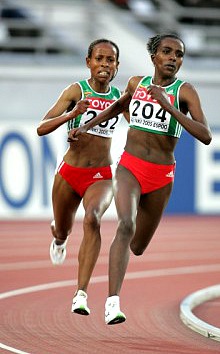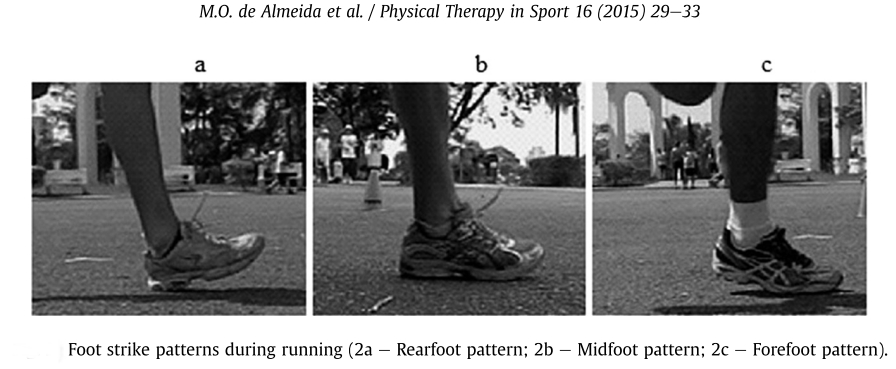Heel strike running combined with running too slow are the causes of common running injuries such as runners knee and tibial fractures in joggers.
What is the Cause of Most Running Injuries?
A 2015 study by Almeida et al. reported that roughly +95% of shod joggers were heel strikers, 0.8% were forefoot runners, and the rest were midfoot strikers. This was the first study to confirm that mostly all shod joggers heel strike.
The injury rate in joggers is nearly 80%. Could this be the answer for the cause of the common running injuries? By running ‘unnaturally’ coupled with ‘slogging’ (slow-jogging)?
The data implied that shod conditions was the primary cause of heel strike and the researchers found that slower running speeds was associated with heel striking as well.
- The higher percentage of the heel strike runners in the study ran much slower than the forefoot and midfoot strikers, suggesting that runners at different levels (novice, sub-elite, elite) use different foot strike patterns.
Joggers who ran with an average speed slower than 11 km/h were heel strikers. The researchers believe that a threshold of speed may exist to differentiate heel strike runners who are normally slower than midfoot and forefoot runners.
And as expected, 33% of the joggers suffered common running injuries such as knee pain, which was attributed to the fact that almost all the joggers were heel strikers.
- Because heel strike running is characterized by greater vertical loading rates, as compared to forefoot runners, heel strike runners are much more likely to develop common running injuries.
The Take Home Message
Our ability to defy and control nature by wearing cushioned shoes while we run causes us to stray away from how we evolved to run, as forefoot runners.

The human anatomy favors forefoot running and running faster, well over 12 km/hr, to avoid injury.
The best way to learn forefoot running is to do so under barefoot or minimalist-shod conditions, and running faster will certainly jump-start your forefoot strike adaptation as well.
More From Run Forefoot:
- Overcome Foot Weakness with Minimalist Shoes
- Try Your Best Not to Heel Strike When Tired
- Because of Shoes, We Lose the Natural Ability to Run Forefoot. Luckily it Can be Re-Learned.
- Compression Socks, Not Your Thing? Good, They Don’t Work Anyways
References:
Almeida et al. Is the rearfoot pattern the most frequently foot strike pattern among recreational shod distance runners? Phys Ther Sport, 2015; 16, 29-33.
Hasegawa, Y., Yamauchi, T and Kraemer, J. Foot strike patterns of runner at the 15-km point during an elite-level half marathon. J Strength Con Res, 2007, 21, 888-93.
Larson et al. Foot strike pattern of recreational and sub-elite runners in a long distance road race. J Sport Sci, 2011, 29, 1665-73.
Bretta Riches
BSc Neurobiology; MSc Biomechanics candidate, ultra minimalist runner & founder of RunForefoot. I was a heel striker, always injured. I was inspired by the great Tirunesh Dibaba to try forefoot running. Now, I'm injury free. This is why I launched Run Forefoot, to advocate the health & performance benefits of forefoot running and to raise awareness on the dangers of heel striking, because the world needs to know.
Latest posts by Bretta Riches (see all)
- Does Foot Strike Really Matter in Running? YES! - 17/04/2024
- Heel Lifts Increase Injury in Runners - 16/04/2024
- Are Minimalist Shoes Good for Seniors? YES! - 14/04/2024


Leave a Reply